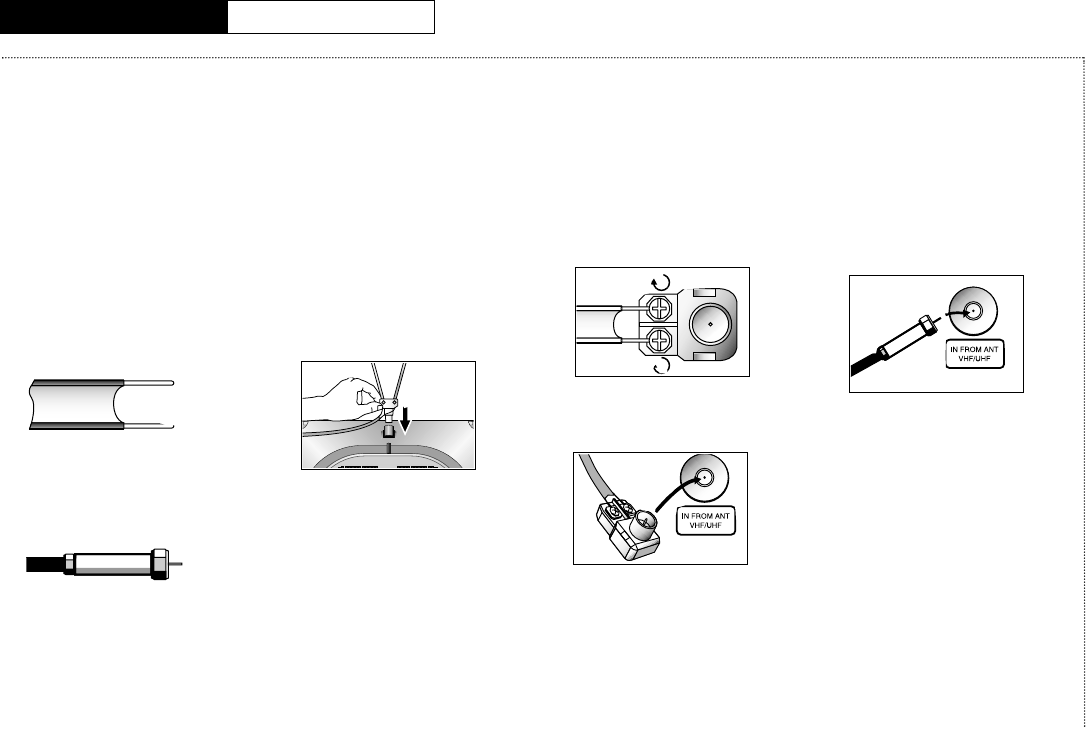
12
C
HAPTER
T
WO
: I
NSTALLATION
C
HAPTER
T
WO
I
NSTALLATION
Connecting VHF and
UHF Antennas
If you do not have cable TV, you
must connect an antenna to your
TV/VCR. First you need to identify
your antenna’s lead type:
• If you are using the antenna
that has 300-ohm twin flat
leads, (see the illustration
below) see “Antennas With
300-ohm Flat Twin Leads,”on
this page.
• If your antenna has a 75-ohm
round lead (see the
illustration below), see
“Antennas With 75-ohm
Round Leads,” on this page.
• If you have two antennas,
see “Separate VHF and UHF
Antennas,” on this page.
Antennas With 300-ohm
Flat Twin Leads
If you use a different 300-ohm
antenna with twin flat leads,
follow the directions below, but
skip step 1.
1 Push the stem of the rod
antenna into the antenna
mount.
2 Place the wires from the twin
leads under the screws on
the 300-75 ohm adapter.
Use a screwdriver to tighten
the screws.
3 Plug the adapter into the
terminal on the rear panel of
the TV/VCR.
Extend the antenna and
adjust it for the clearest
picture.To reduce the risk of
damage, only adjust the
antenna by moving the black
plastic base.
Antennas With 75-ohm
Round Leads
1 Plug the lead into the
terminal on the rear panel of
the TV/VCR.
Separate VHF and UHF
Antennas
If you have two separate anten-
nas for your TV/VCR (one VHF
and one UHF), you must combine
the two antenna signals before
connecting them to the TV/VCR.
This procedure requires a com-
biner attachment that you can
purchase at an electronics
store.
02438A(eng/SECA) 2002.2.20 10:18 PM Page 12


















